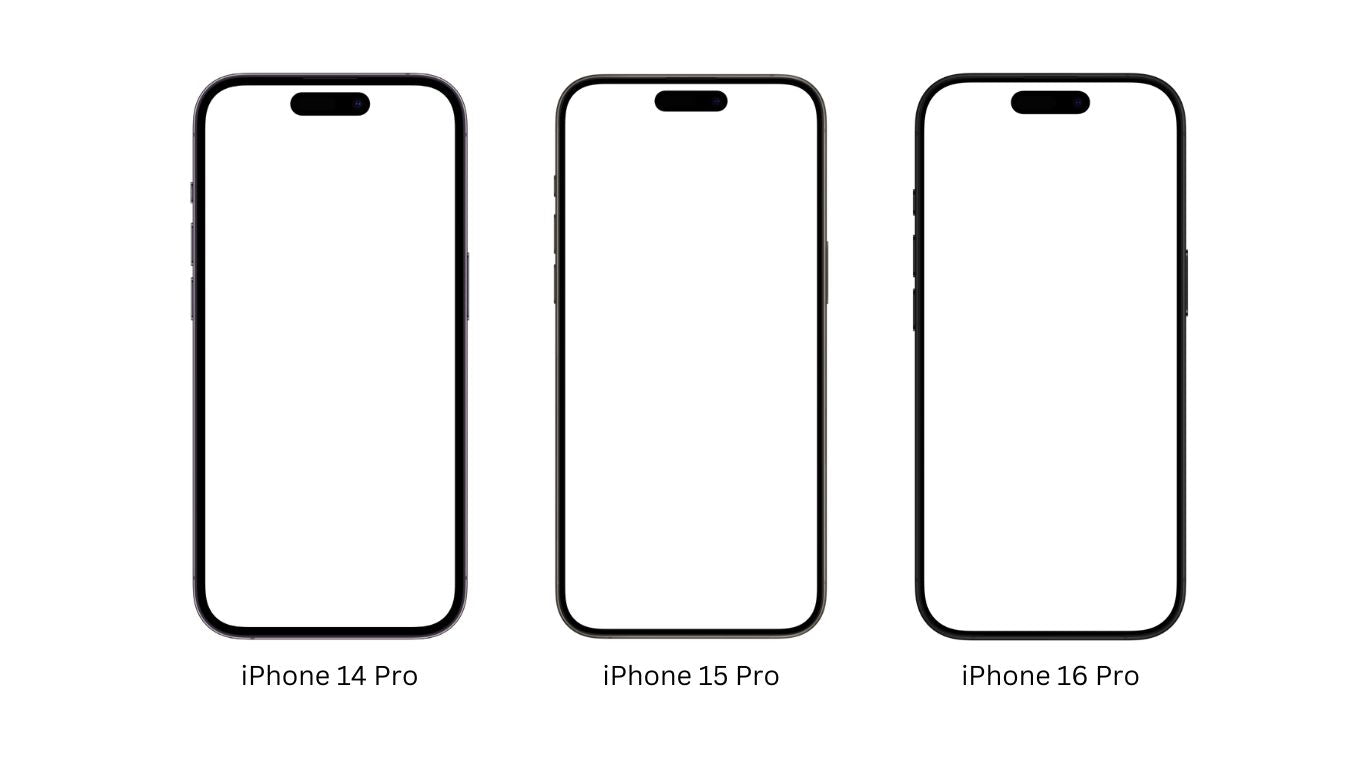The Evolution of iPhone Bezels: A Look Back

The presence or absence of bezels on an iPhone can significantly impact the user experience. Larger bezels may provide a more comfortable grip, prevent accidental touches, and protect the screen. However, slim bezels can enhance the immersive viewing experience and make the device feel sleek and modern. Ultimately, the ideal bezel size depends on individual preferences and usage patterns.
History and significance of iPhone bezels
iPhone bezels have been an integral part of its design since its inception. These narrow borders surrounding the screen serve various purposes, including housing essential sensors and providing a comfortable grip. Over the years, iPhone bezels have played a significant role in shaping the user experience and defining the overall aesthetic appeal of the device.
iPhone 1: Thick Bezels
The iPhone 1 was Apple's first iconic smartphone. These early models featured thick bezels surrounding the screen, which served both functional and design purposes. The wide bezels provided a sturdy frame for the display and incorporated touch-sensitive areas for navigation, ensuring a seamless user experience. Although the thick bezels may have been seen as a drawback in terms of aesthetics, they were necessary for the technology of that time.
iPhone 3 and 4: Refinement of Bezels
Ergonomics played a significant role in the refinement of iPhone bezels with the introduction of iPhone 3 and 4. These devices featured slimmed-down bezels that improved one-handed usage and comfort. Additionally, advancements in screen technology allowed for greater screen-to-body ratios, reducing the size of the bezel even further. This refinement resulted in a more streamlined design and an enhanced user experience.
iPhone 5 and 6: Introduction of Slim Bezels
With the iPhone 5 and 6, Apple made a significant shift towards slim bezels. These models featured larger screens with narrower bezels, allowing for more immersive viewing experiences. The introduction of slim bezels also had a profound impact on iPhone design and aesthetics, giving them a sleeker and more modern appearance.
iPhone 7 and 8: Further Reduction of Bezels
The introduction of iPhone 7 and iPhone 8 marked a significant leap in bezel reduction. With the introduction of edge-to-edge screens and minimal bezels, Apple further enhanced immersive viewing experiences. These changes also had an impact on phone durability and functionality. The reduced bezels allowed for larger screens while maintaining a compact form factor. This made it easier to hold and operate the device with one hand. Additionally, the edge-to-edge display provides a sleek and modern aesthetic, elevating the design of the iPhones. Overall, these advancements in bezel reduction showcase Apple's commitment to improving user experience and pushing the boundaries of smartphone design.
iPhone X Series: Almost Bezel-less
In the iPhone X and subsequent models, Apple introduced a significant change in bezel design by implementing almost bezel-less screens and the introduction of the controversial notch. These changes have had a profound impact on the user experience, software capabilities, and overall design trends in the smartphone industry. The reduction of bezels has allowed for larger screens without increasing the overall size of the phone, providing users with a more immersive viewing experience. The removal of bezels also necessitated the implementation of new software gestures and navigation techniques, which have influenced not only how users interact with their iPhones but also influenced other smartphone manufacturers to adopt similar design choices.
iPhone 11, 12, 13, 14: Thinned Bezel
Apple introduced iPhone X in 2017 which included many innovative and new features, as well as a new feature known as the notch. Apple used the notch to accommodate more sensors and cameras, making the iPhone X more user-friendly. It was not until iPhone 14 that Apple changed the notch without changing the size. Nevertheless, every iPhone model features a reduced bezel size.
iPhone 14 Pro, 15 Series: Notch Less Smaller Bezel
In the iPhone 14 Pro, a dynamic island replaces the notch and houses the front-facing camera and Face ID sensors. This allows a larger screen to be displayed without increasing the size of the phone.
iPhone 16 Series: Next-Level Display Design
The iPhone 16 series showcases Apple's continued innovation in display design, with each model featuring a unique bezel dimension. The iPhone 16 and iPhone 16 Plus maintain a classic uniform bezel width of 2.275mm, offering consistency across all sides. Meanwhile, the iPhone 16 Pro Max pushes the boundaries with the thinnest bezels at 1.36mm, enhancing its sleek profile. iPhone 16 Pro introduced Apple's first asymmetrical full-screen design, featuring wider side bezels at 1.44mm than the previous 1.41mm top and bottom. Even though this difference is subtle, users will likely perceive it as symmetrical, highlighting Apple's mastery of design.
Frequently Asked Questions:
Which iPhone Has the Smallest Bezel?
iPhone 16 Pro Max has reached its best level with a 1.36mm bezel. Compared to the iPhone 15 Pro (which was the thinnest before), the difference is 0.19mm. Even though the iPhone 16 Pro & iPhone 16 Pro Max have a bigger screen than the iPhone 15 Pro series.
How do iPhone bezels compare to those of other smartphones?
When comparing iPhone bezels to those of other smartphone brands, it is evident that Apple has made significant strides in reducing the size of bezels. However, some competing brands have pushed the boundaries even further with bezel-less designs, offering users a more immersive viewing experience.
Conclusion
In conclusion, the evolution of iPhone bezels has marked significant changes in the design and functionality of these devices. From thick bezels in the early models to almost bezel-less screens in recent ones, iPhone bezels have seen continuous refinement and reduction. This has not only impacted the user experience but also influenced design trends and software development.
-
Posted in
bezel frame, iphone bezel, iphone bezel frame




